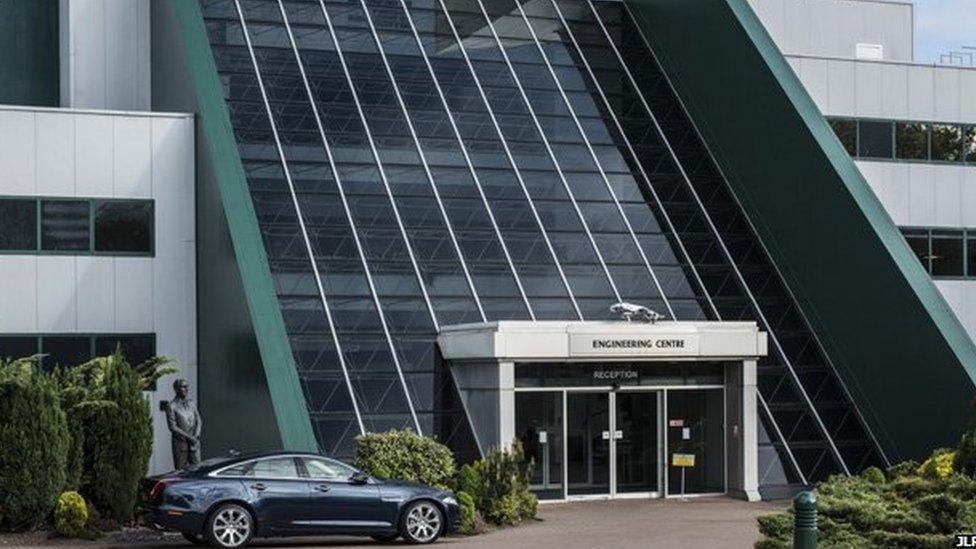Land Rover Defender: An idea born on Anglesey
- Published
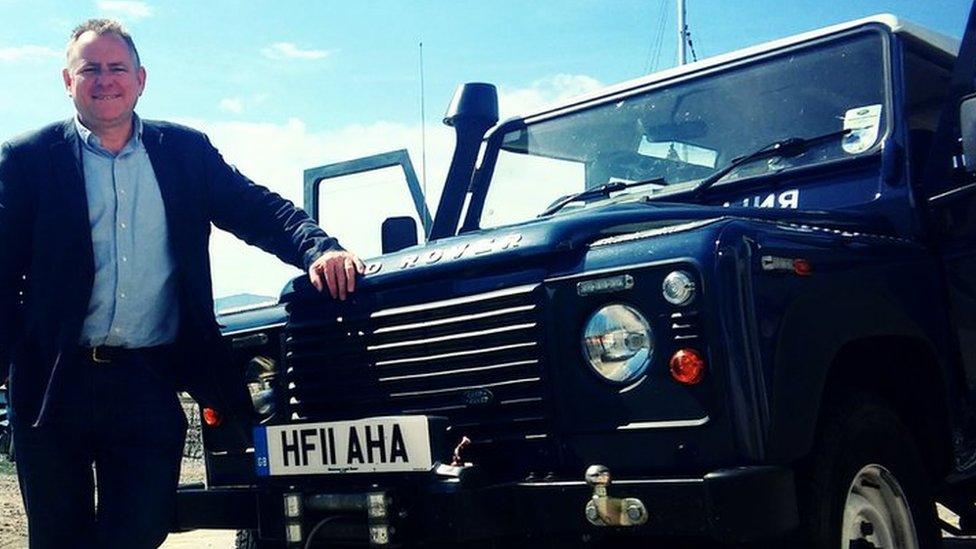
It's about as comfortable as being kicked up the rear by the Welsh rugby team, but any criticism today is misplaced because I am enjoying the thrill of driving a Series One Land Rover into the tide on Red Wharf Bay on Anglesey.
You will be drowning this week in tributes to a "great British institution". Land Rover is finally bringing to an end UK production of its Defender model. (That's right, the boxy one you always get stuck behind on a back road in Wales).
The car can trace its roots back to north Wales nearly 70 years ago. So I've embarked on a sentimental journey to Ynys Mon to pay homage to where it all began.

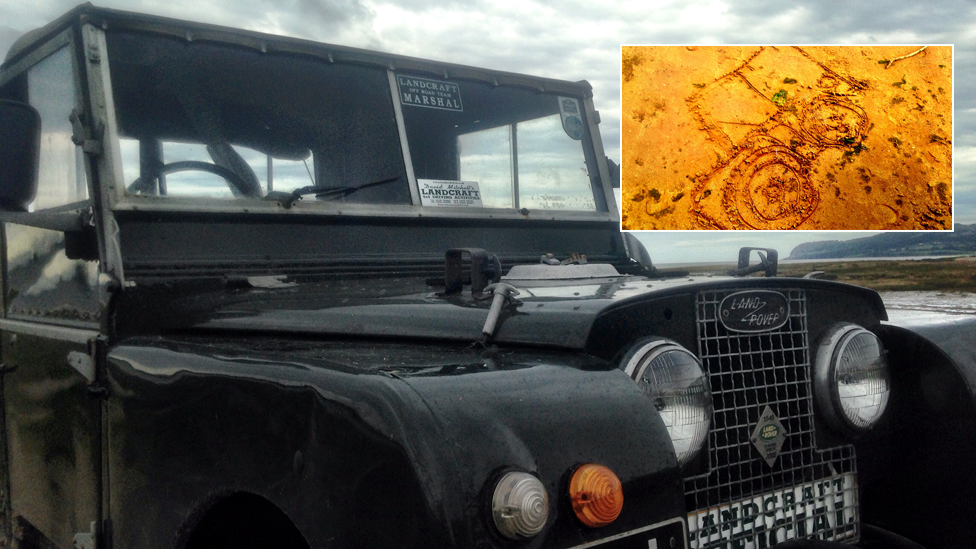
When you climb aboard the Land Rover, if you're used to something a little more modern, you will immediately notice the brutal accommodation; hard seats, a dashboard that would rearrange your teeth in the unlikely event that you might have to brake if driving too fast, no heater, no carpets and no seatbelts. This is motoring late 1940s-style.
The engine takes a while to fire when you press the ignition and its little petrol engine doesn't sound as though it would climb a hill, let alone mountains. But let the clutch up and pull off across the sand - crucify the complaining gearbox, slip into second - and suddenly you understand why this shaking box of aluminium and canvas conquered the world.
Every time I've broken down over the last 30 years, I do the usual male metropolitan thing; lift the bonnet, look knowledgably at the crowded engine bay and then phone the breakdown company.
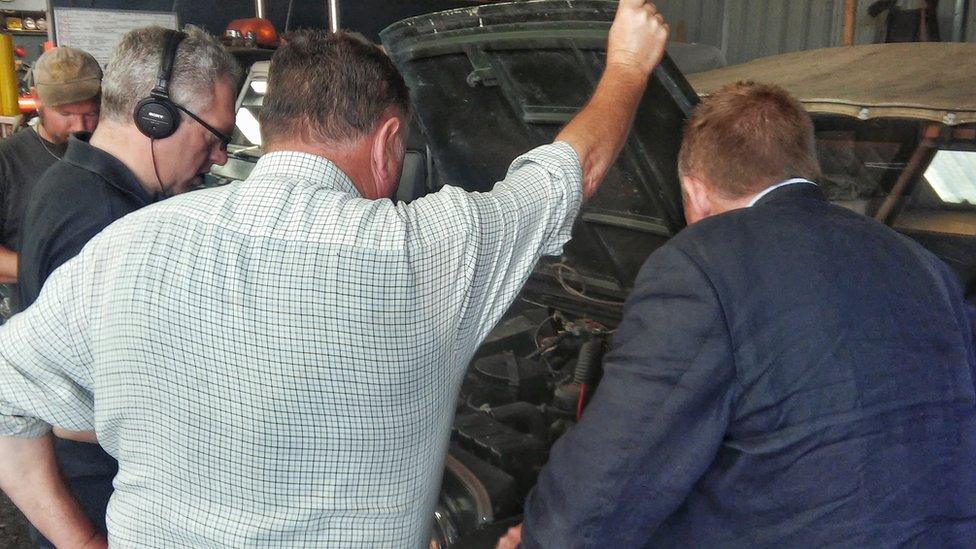
In a Land Rover, there is nothing to go wrong. If it stops, all you need is a hammer to persuade it back into life. Its bicycle-like simplicity won fans the world over. And it's also the reason so many of them are still on the road - when something breaks, it's so simple to repair.
When you were last stuck behind a Land Rover, you would have had time to read the badge on its rear - Made in Solihull, Birmingham, England. But it is Wales that should pick up the credit for the inspiration for one of the world's most iconic cars.
Maurice Wilks, Rover car company's engineering genius, farmed on Anglesey.
After World War Two, he had been much impressed by the American Willys Jeep. The British motor industry - which had been busy making tanks, planes and munitions - now needed products to export for much-needed cash.
Walking along the beach on Red Wharf Bay near his home in 1947, Maurice grabbed a stick, and sketched in the sand the shape of what would become the Land Rover. Two boxes - one big, one small. A wheel in each corner. Soon the factory prototype would race over the dunes here.
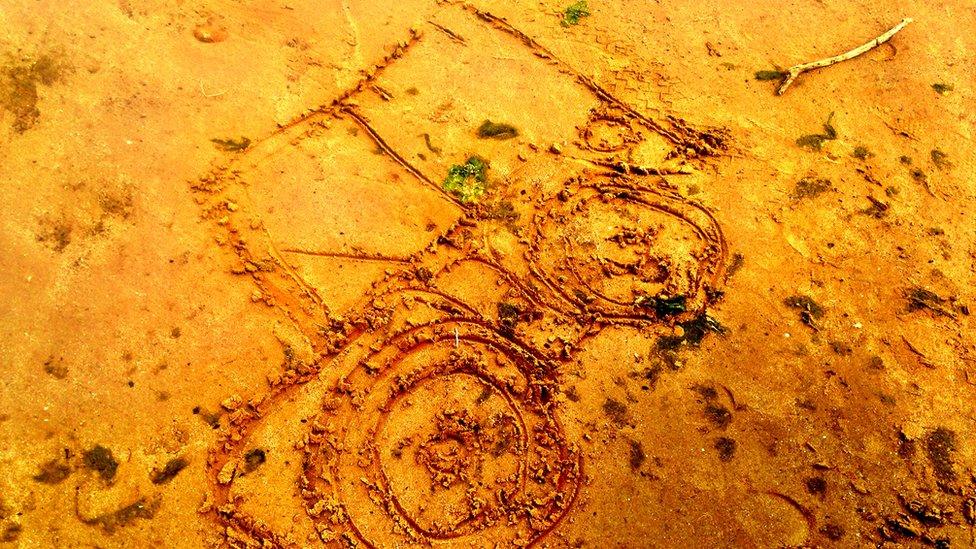
The car was only ever intended to be a stop gap. But its design lasted for nearly 70 years. Like the VW Beetle, Citroen's 2CV and the original Mini, it was the perfect product for its time.
Maurice intended the Land Rover to be a car for farmers - a cross between a car and a tractor. But soon the military, emergency services, globe-trotting adventurers and urban jungle drivers realised its potential.
The 1950s and 60s were kind to Land Rover. It enjoyed good sales, little competition and a growing market in the near monopoly of the British Commonwealth.
But by the 1970s, the blight of the British car industry had set in and industrial unrest, poor management and little product development would see Land Rover caught up in the automotive equivalent of pass the parcel, as a British government - now the owner of the company - tried to sell it off to BAE, Ford, BMW and, finally, Tata.
The last decade has been good for Land Rover. Vast investment, new product lines and the growth of India, China and Russia's middle classes have see the descendents of Anglesey's little runabout increase in their tens of thousands.
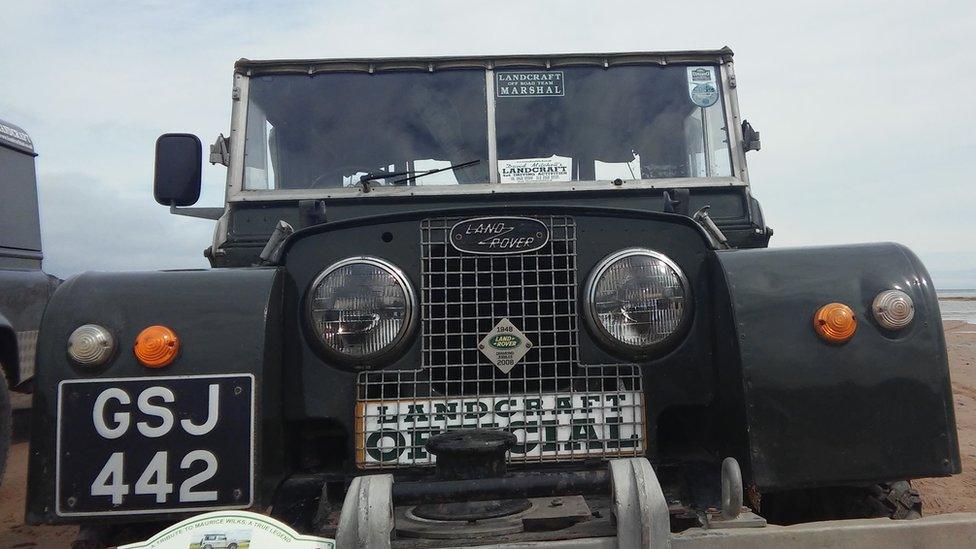
But after nearly 70 years, it is the end of the road for the Defender. Its long in the tooth design just will not cut it any longer with increasingly strict crash safety regulations and emissions standards. Its life is now coming to an end.
You will find Maurice Wilks' final resting place in St Mary's Church, Llanfair-yn-y-Cwmwd, in Dwyran on his beloved Anglesey.
Perhaps Maurice was inspired by his local church - its ancient squat place of worship is simply built of slate and stone, with no architectural fripperies.
A rose grows over his grave and yet no mention of the Land Rover on the headstone. Carved in lichen-covered letters, a reminder of his other great engineering project - the gas turbine engine. Maurice died too young to know how successful his invention would become.
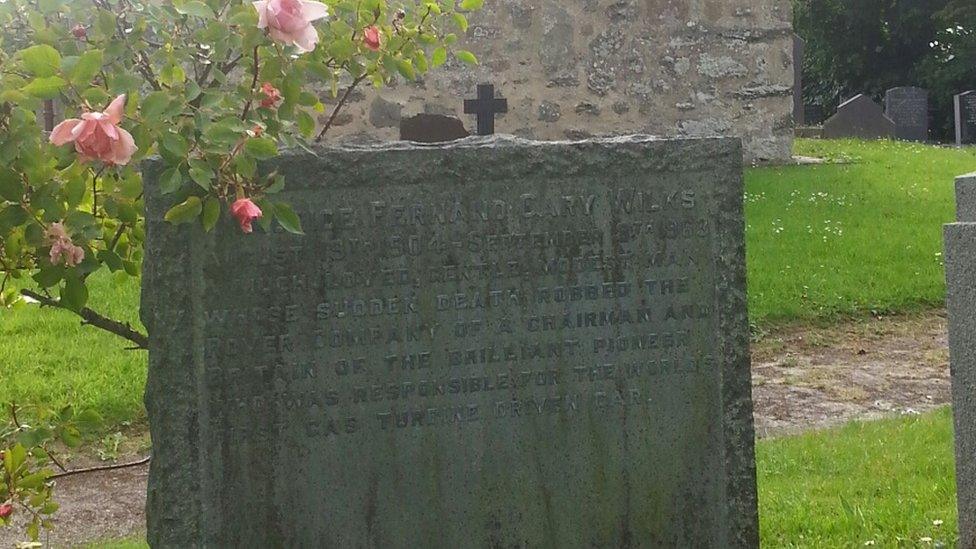
Anglesey does not make enough of its engineering gift to the world. Wales should do more to reclaim its part in the story. This beautiful place, with its spectacular coastline and the majesty of the distant mountains, is what inspired a man to think great thoughts.
The two millionth Defender has been sold in aid of a wildlife charity at auction at Bonhams in London for £400,000. A far cry from the £400 those first Land Rovers fetched when new in the late 1940s. Remember next time you are stuck behind one - it might say made in England on the badge, but Land Rover was inspired by Wales.
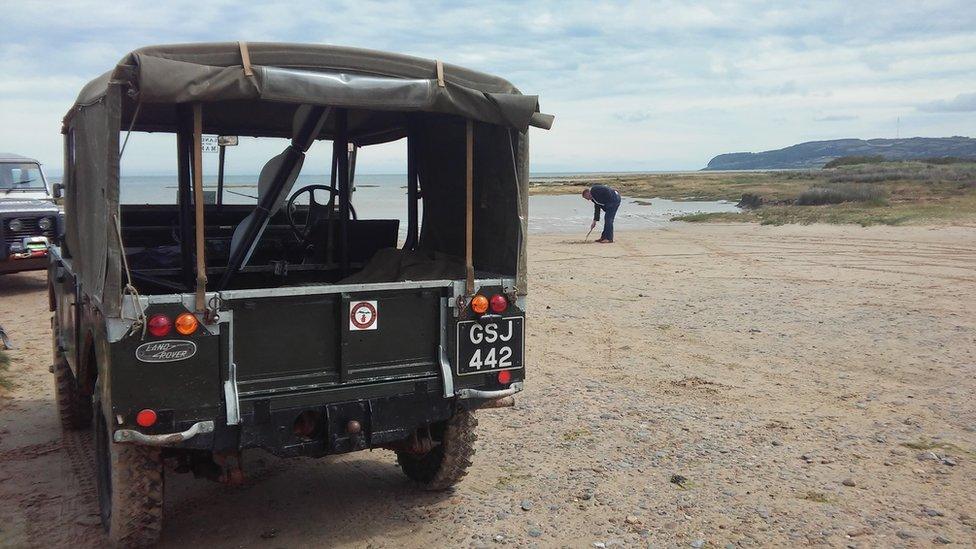
You can listen to Land Rover - the Great Welsh Idea on BBC Radio Wales, 30 January, at 13:30 GMT and on BBC iPlayer Radio after broadcast.
- Published25 January 2016
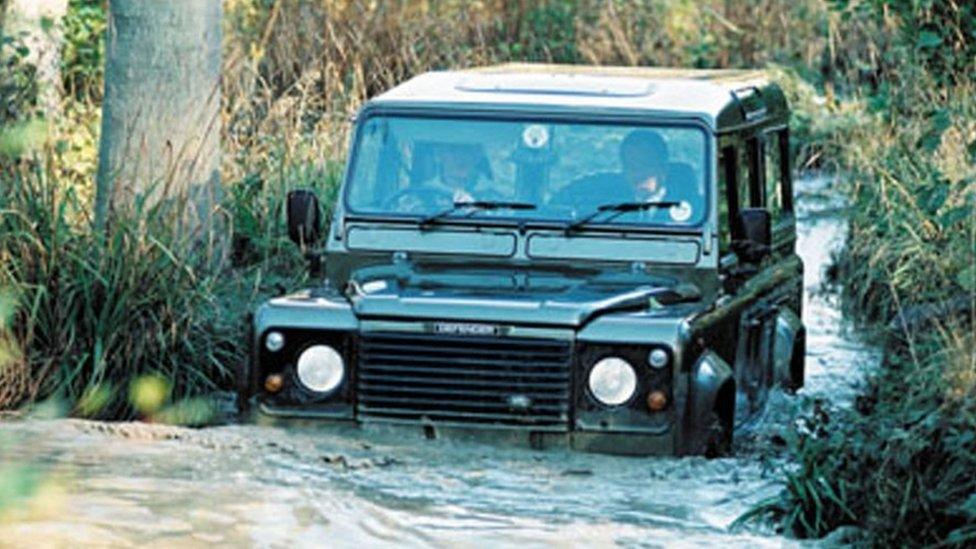
- Published21 January 2016
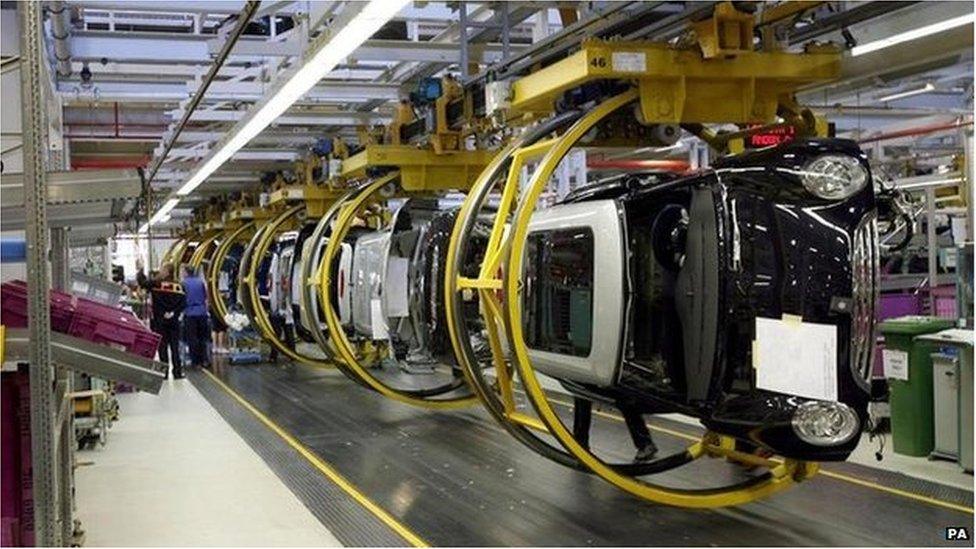
- Published11 January 2016
